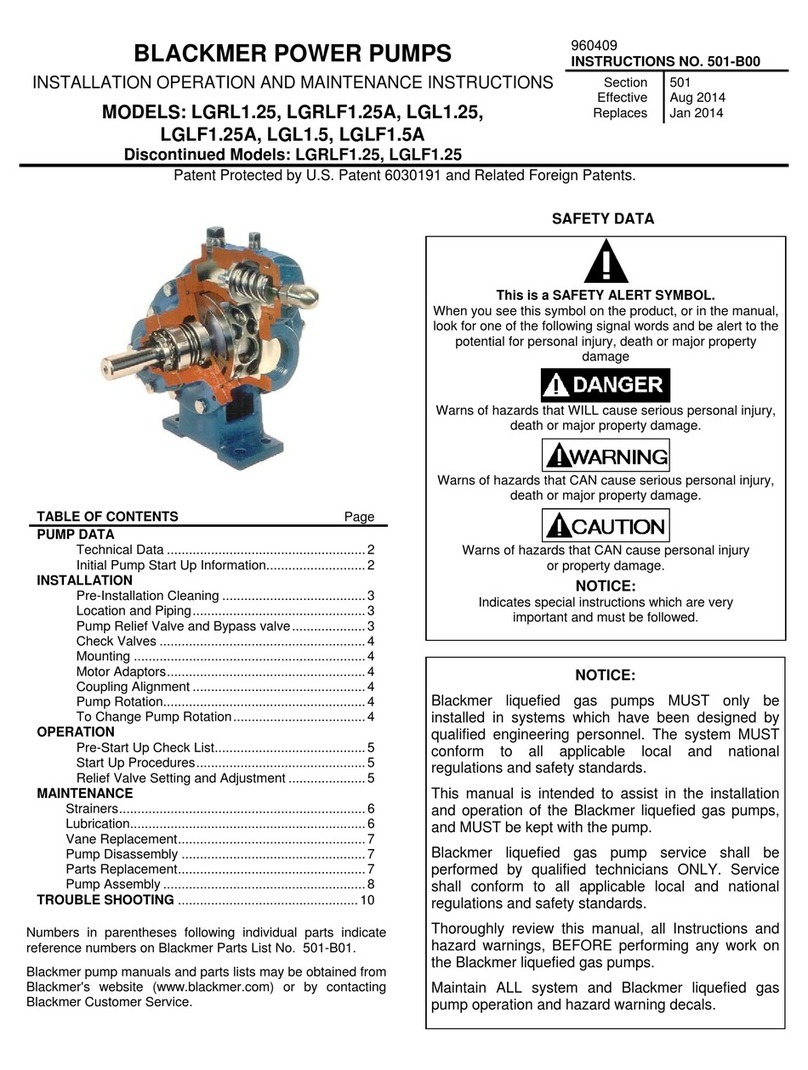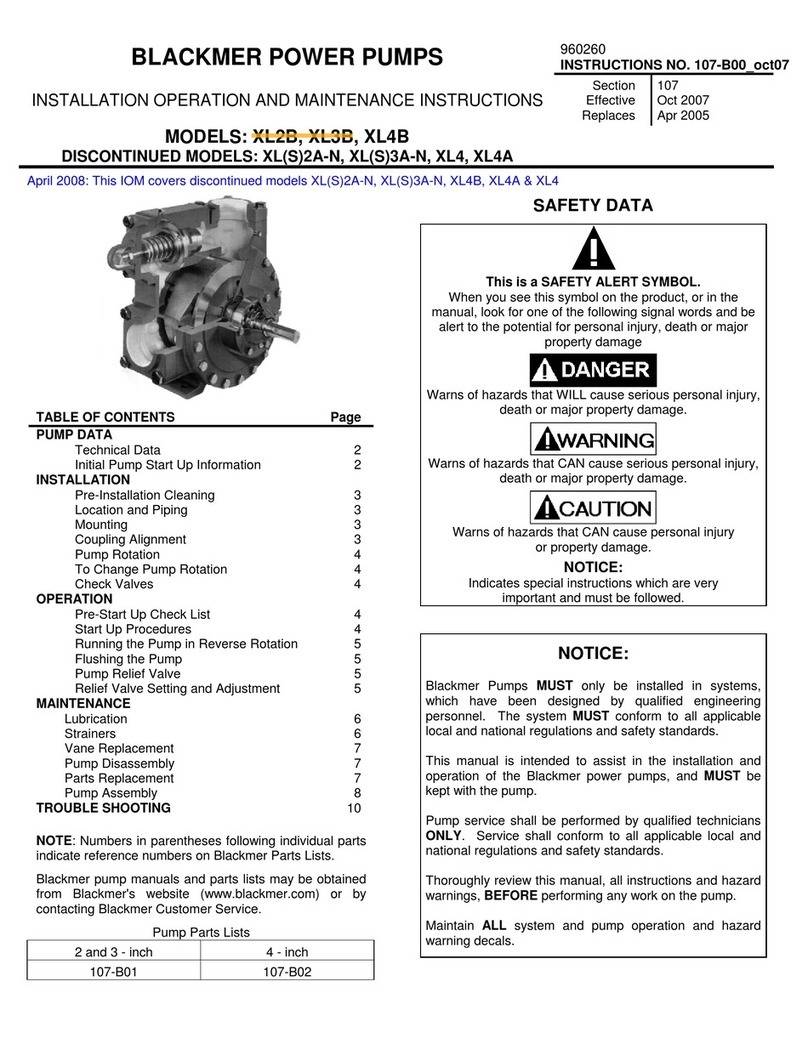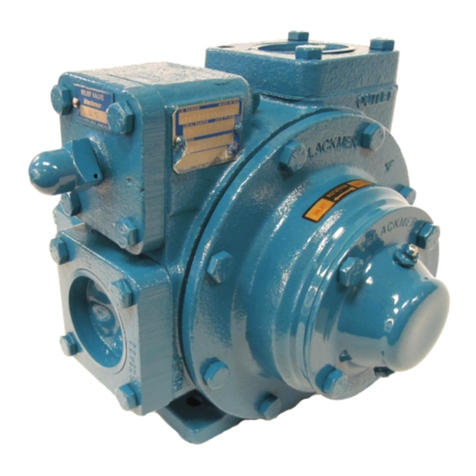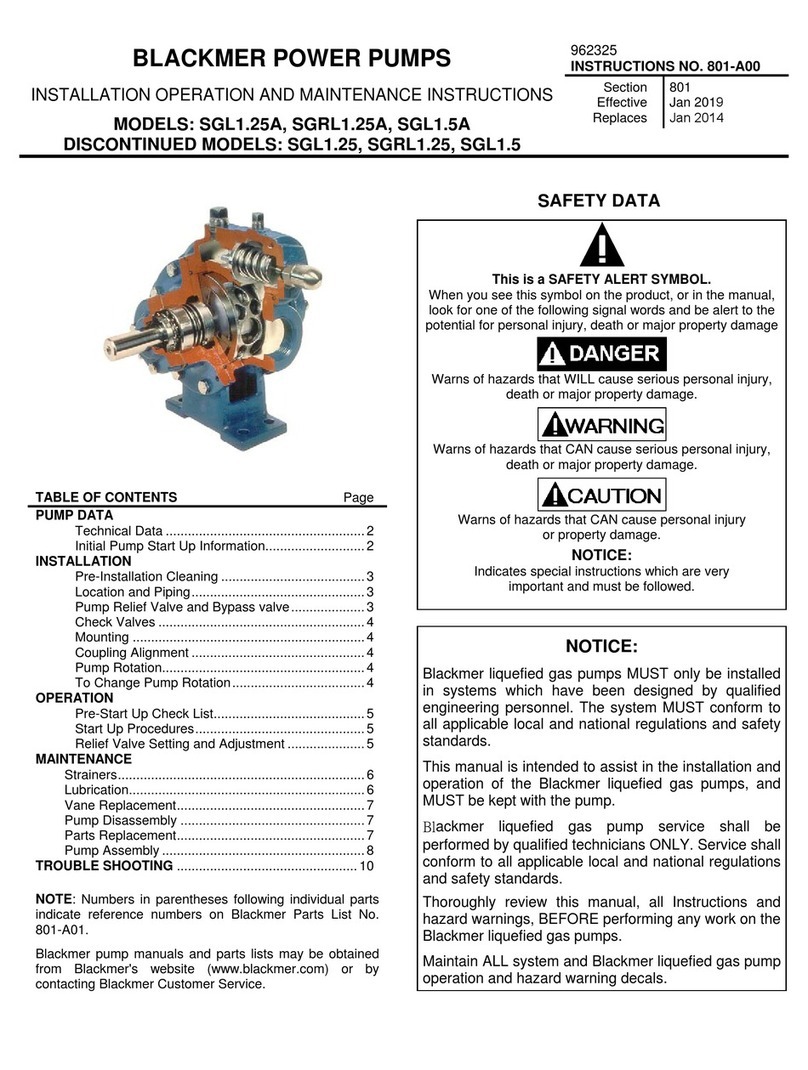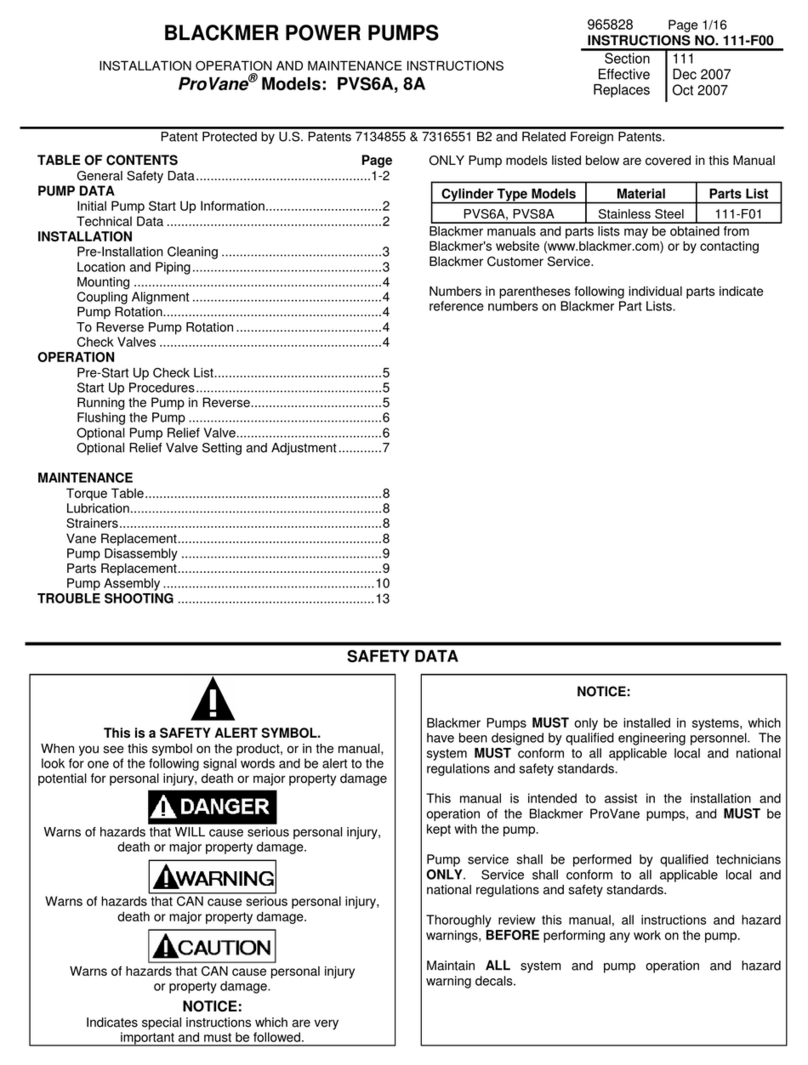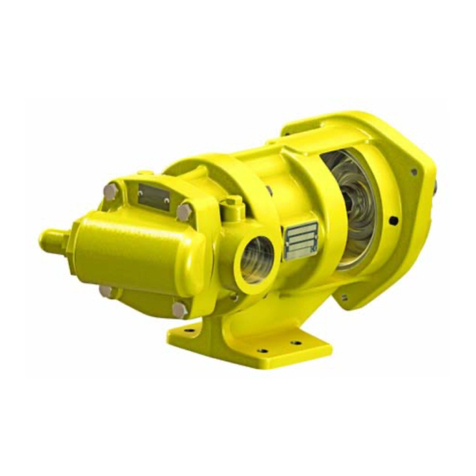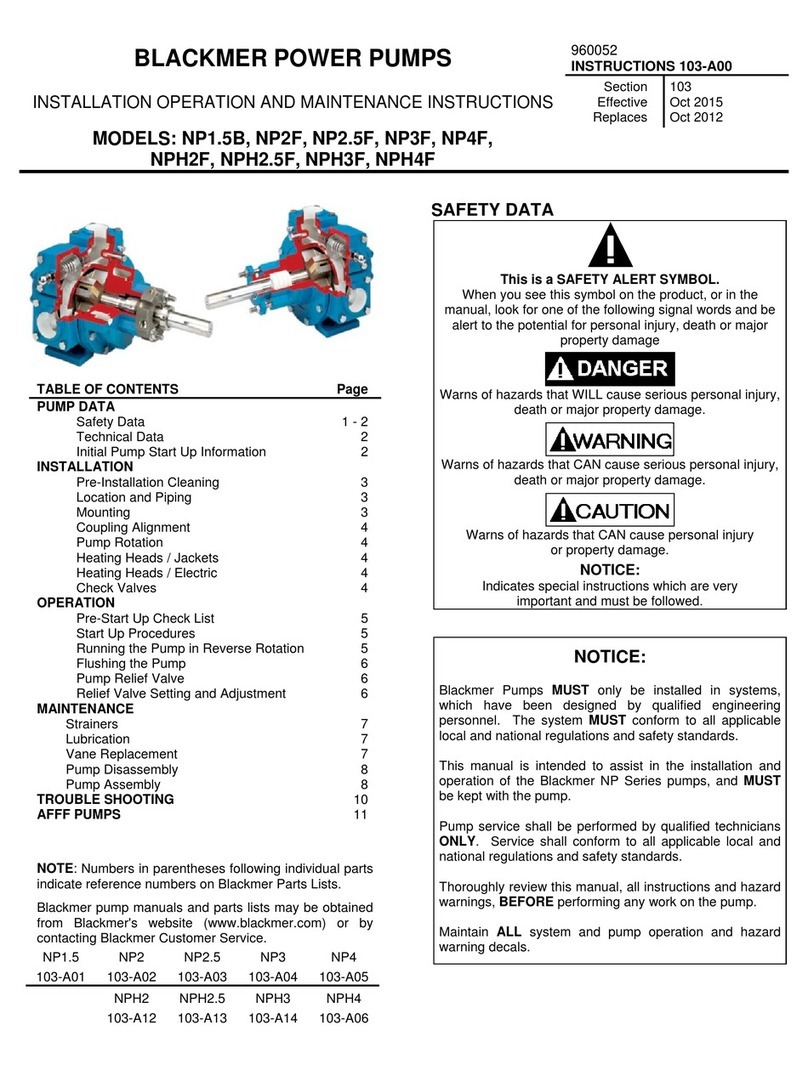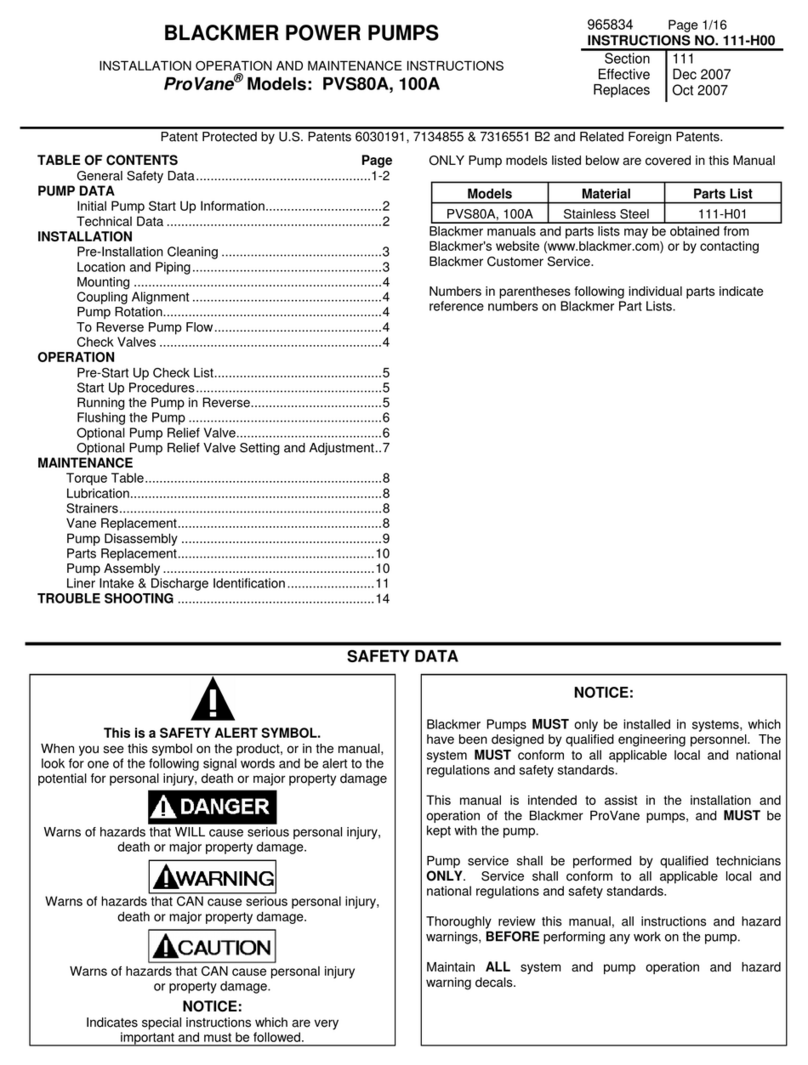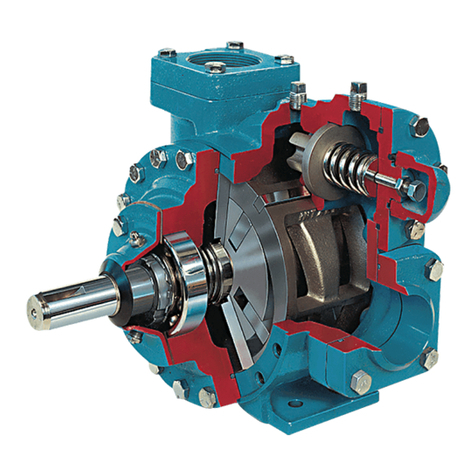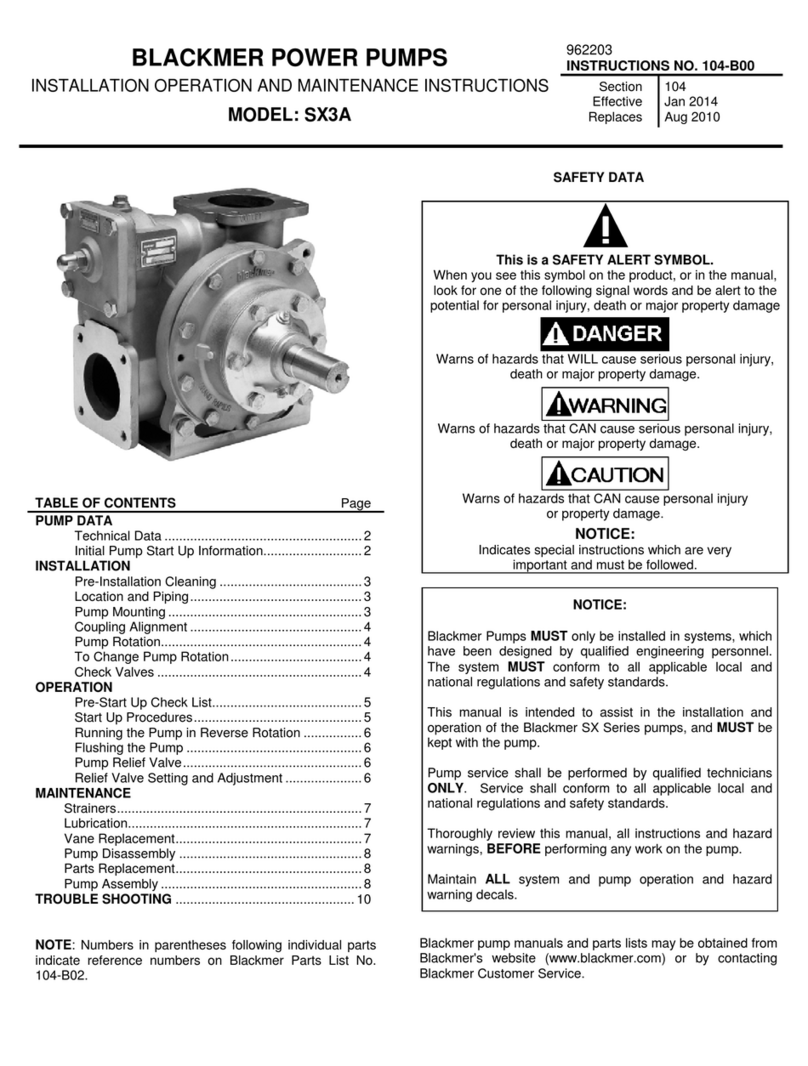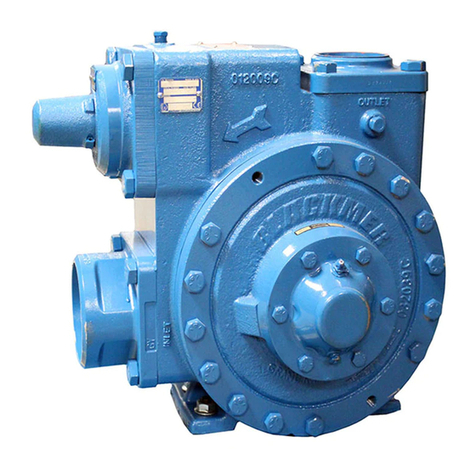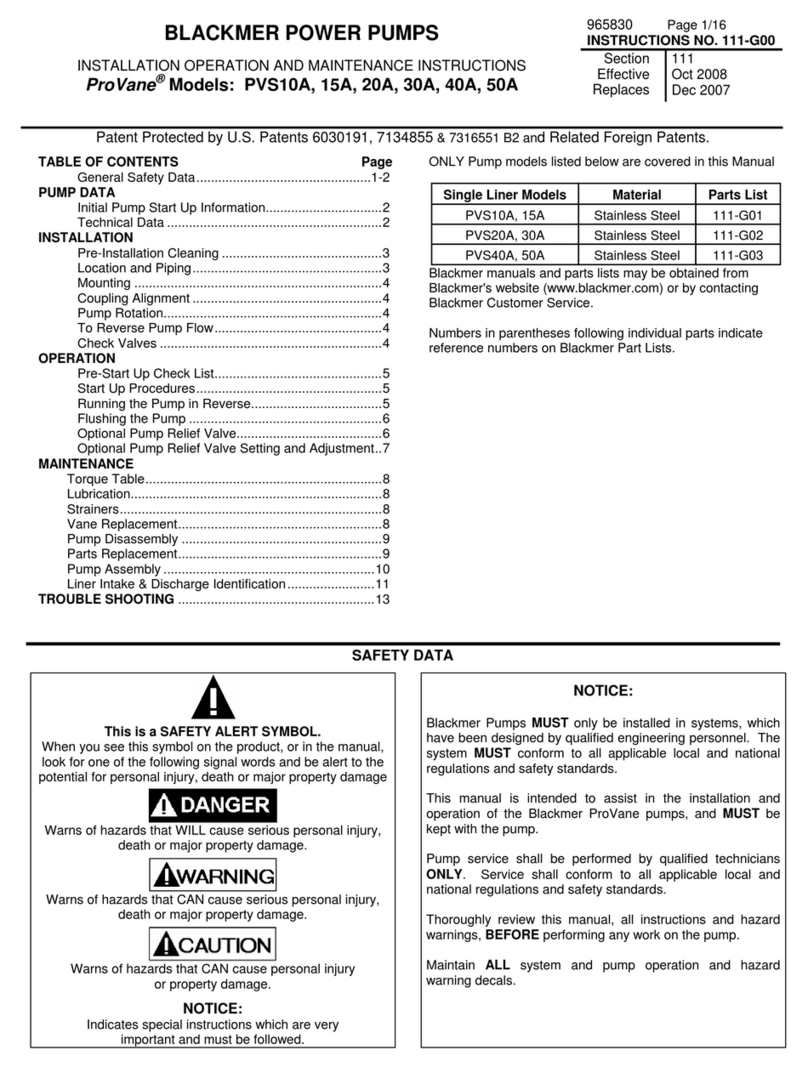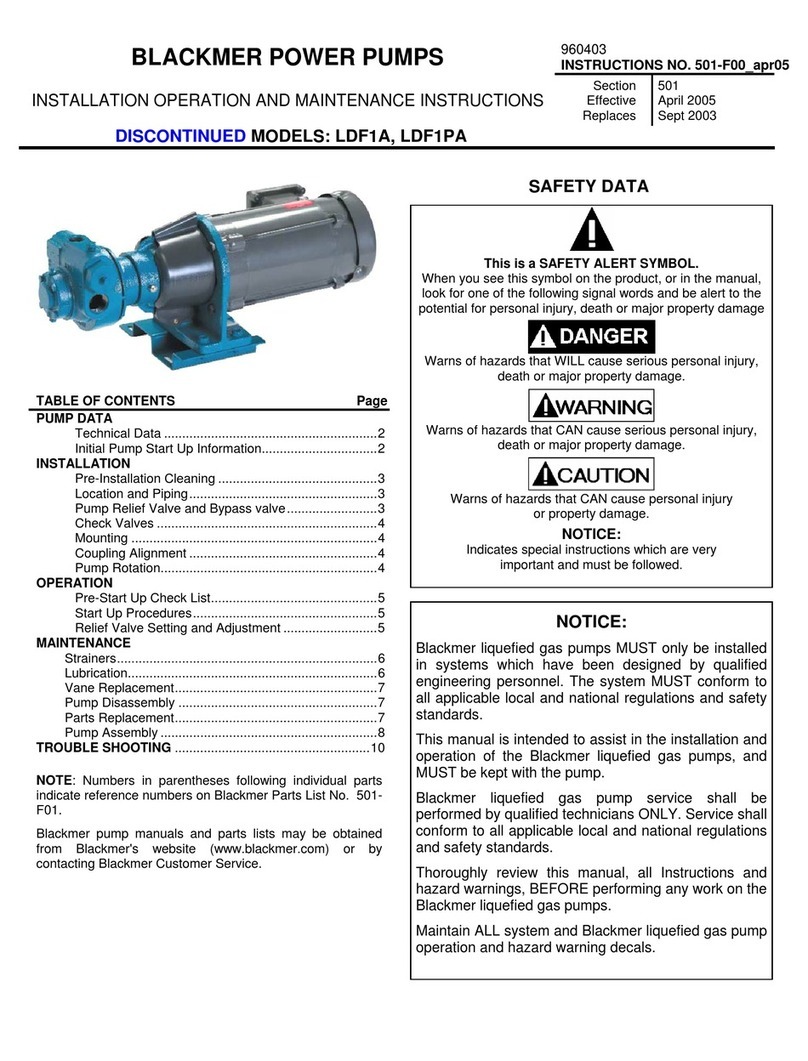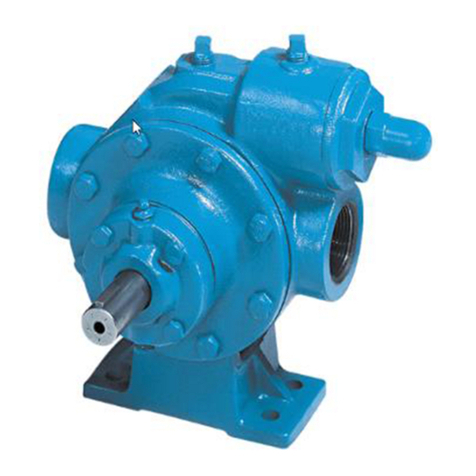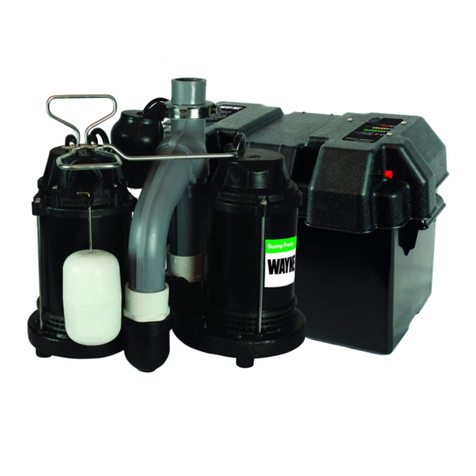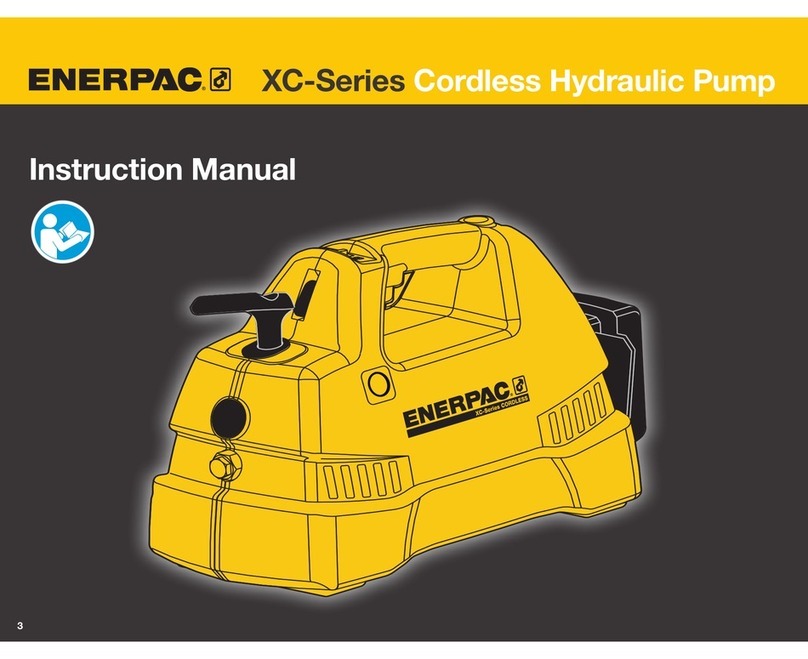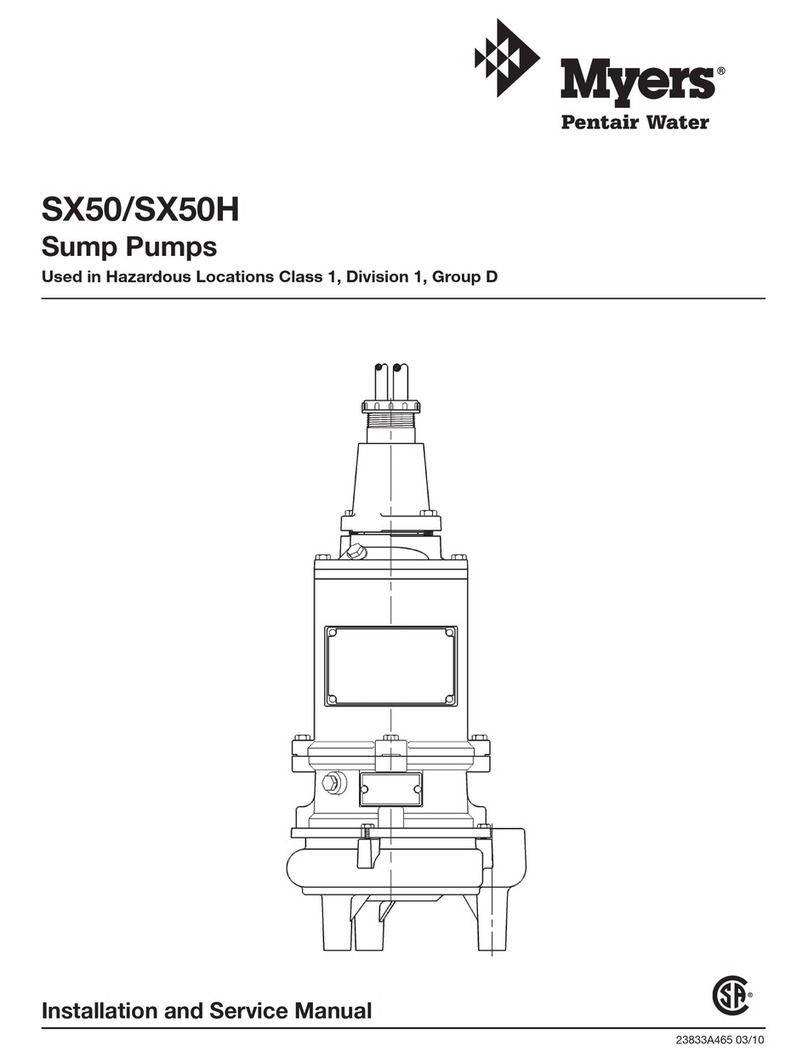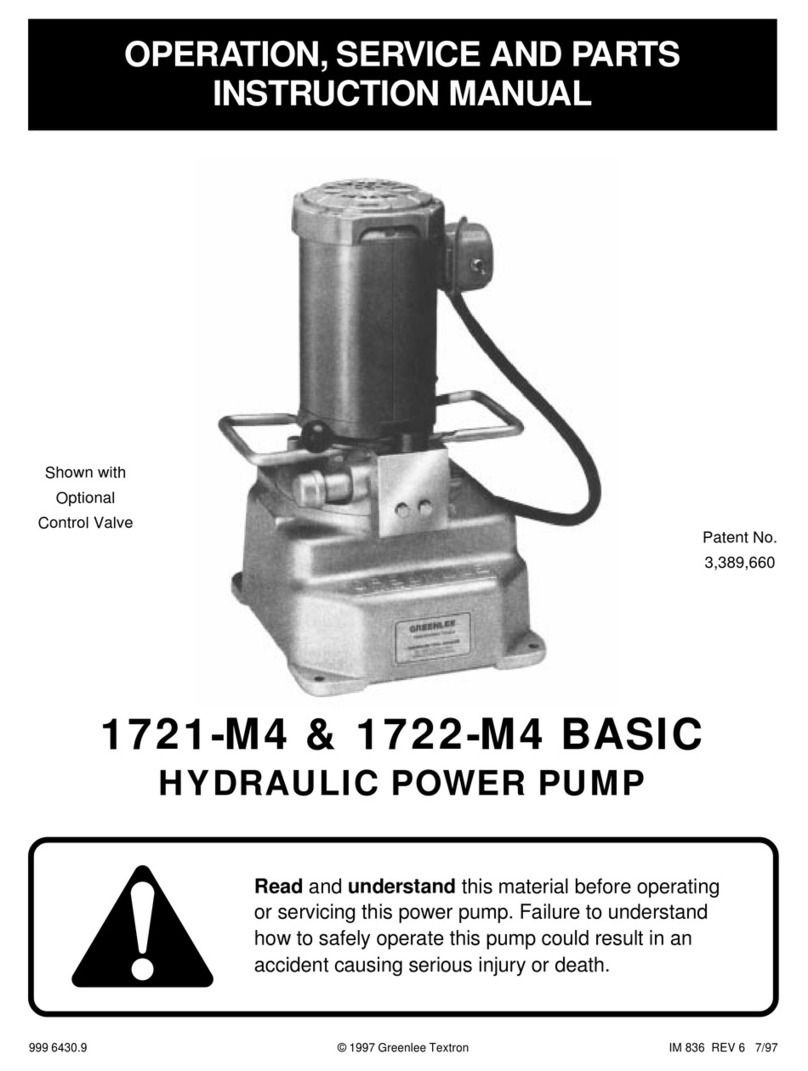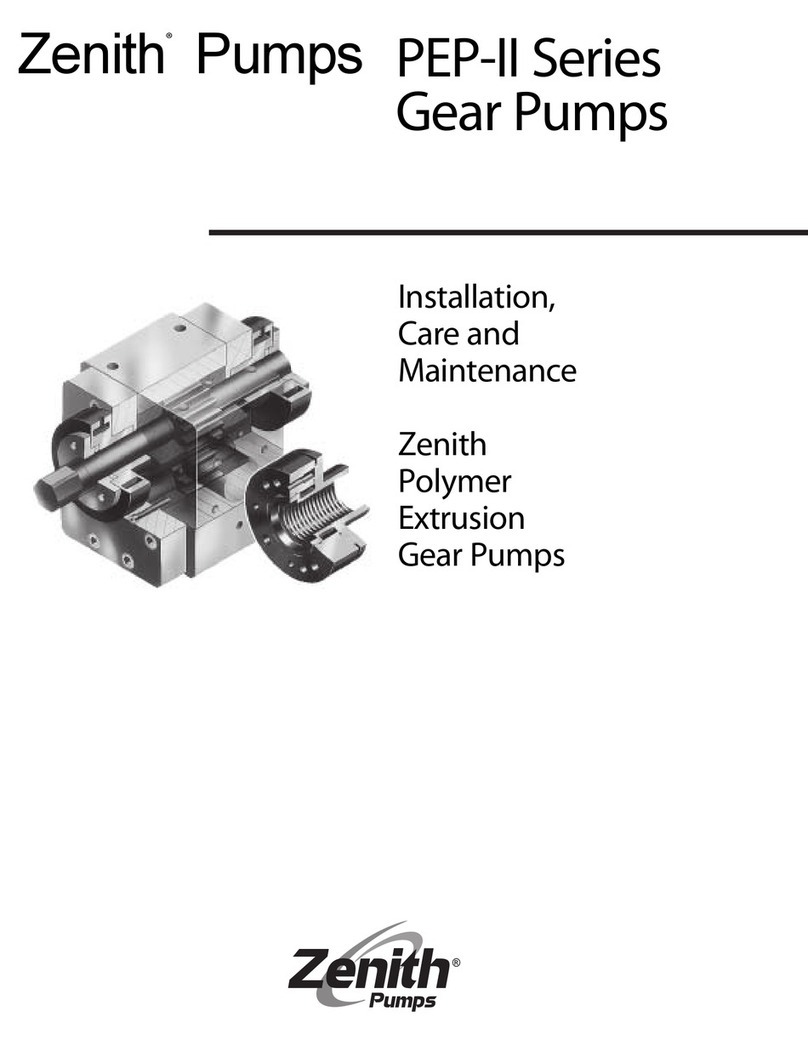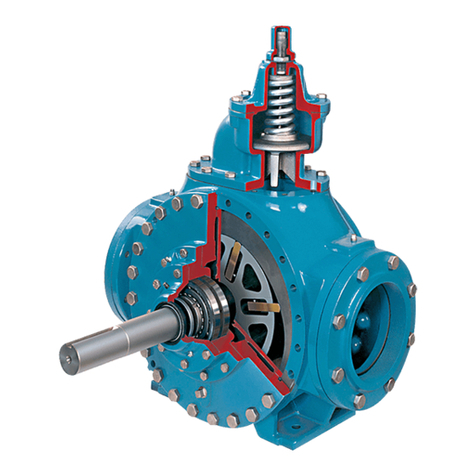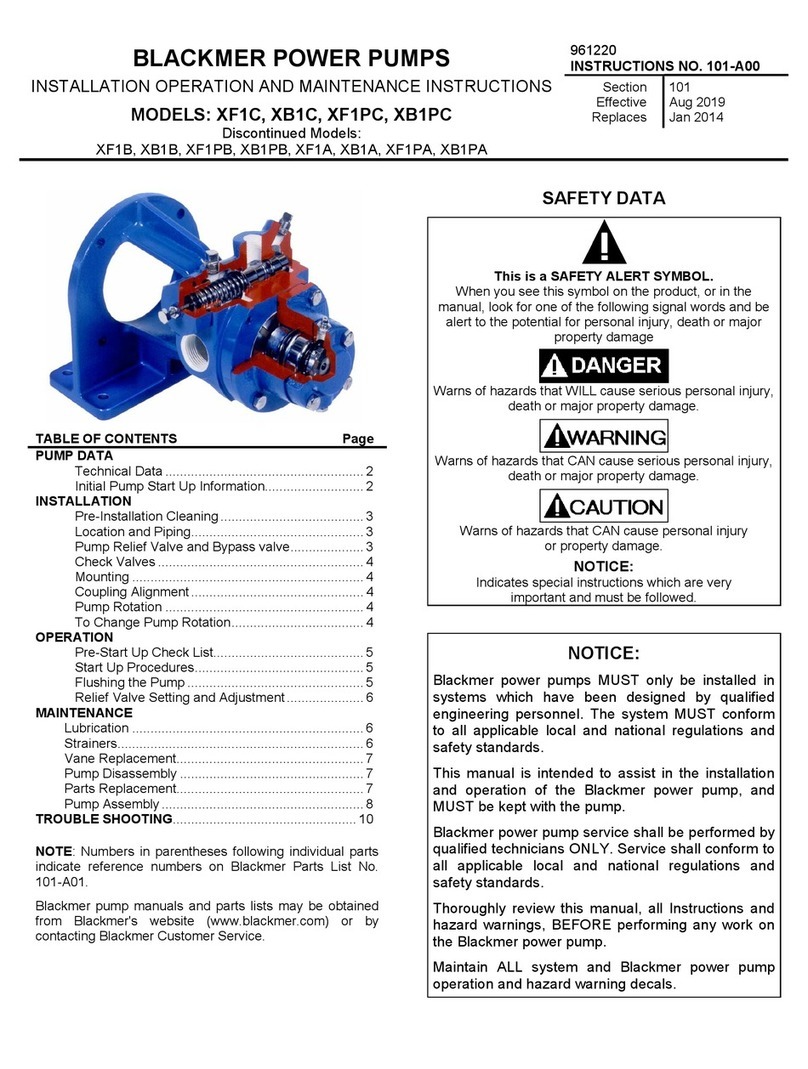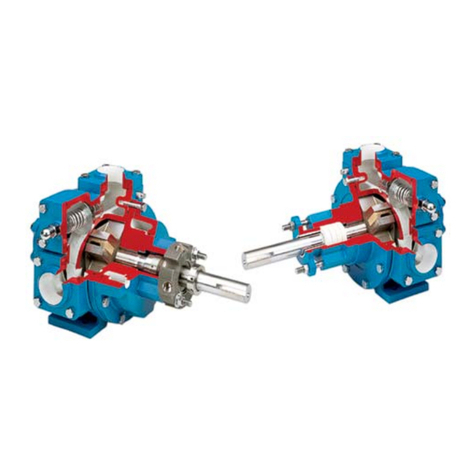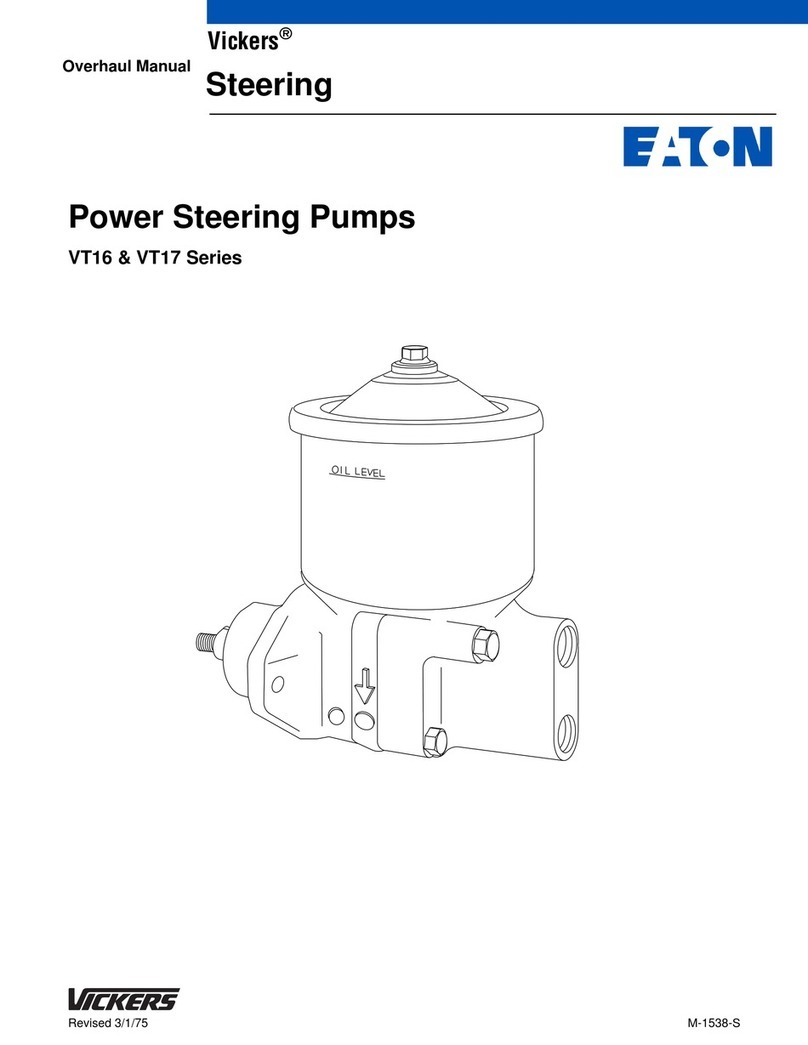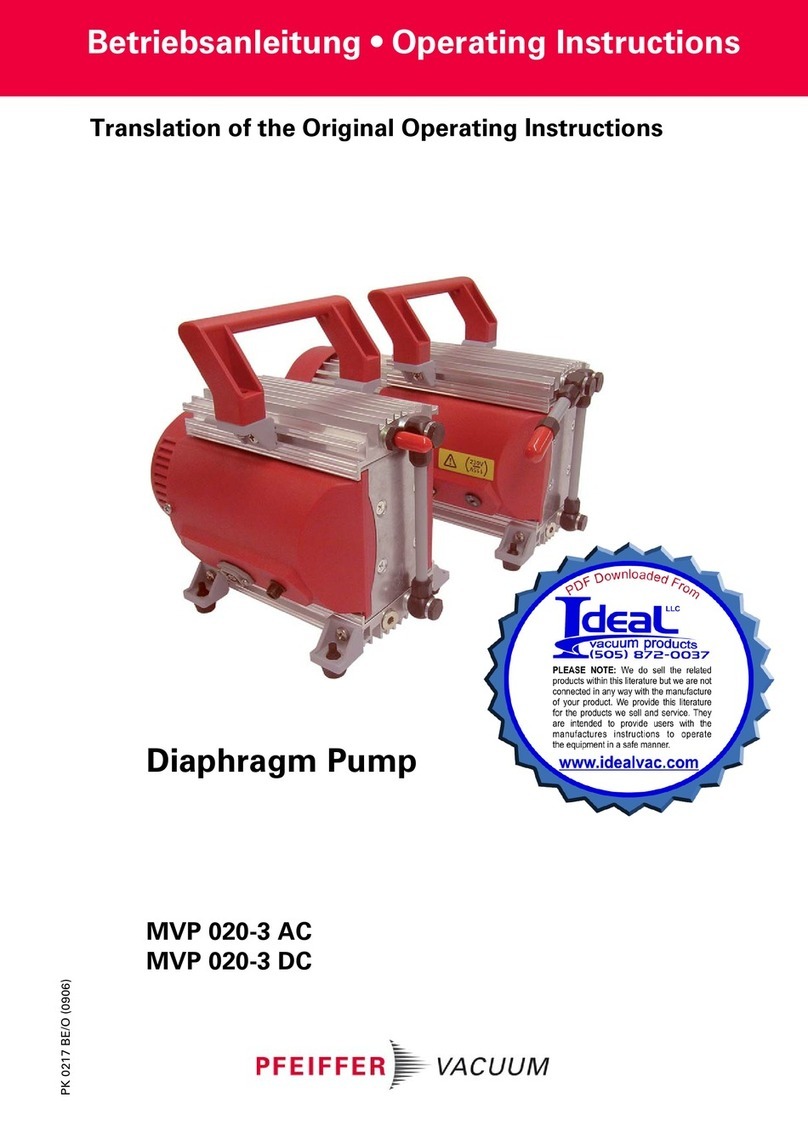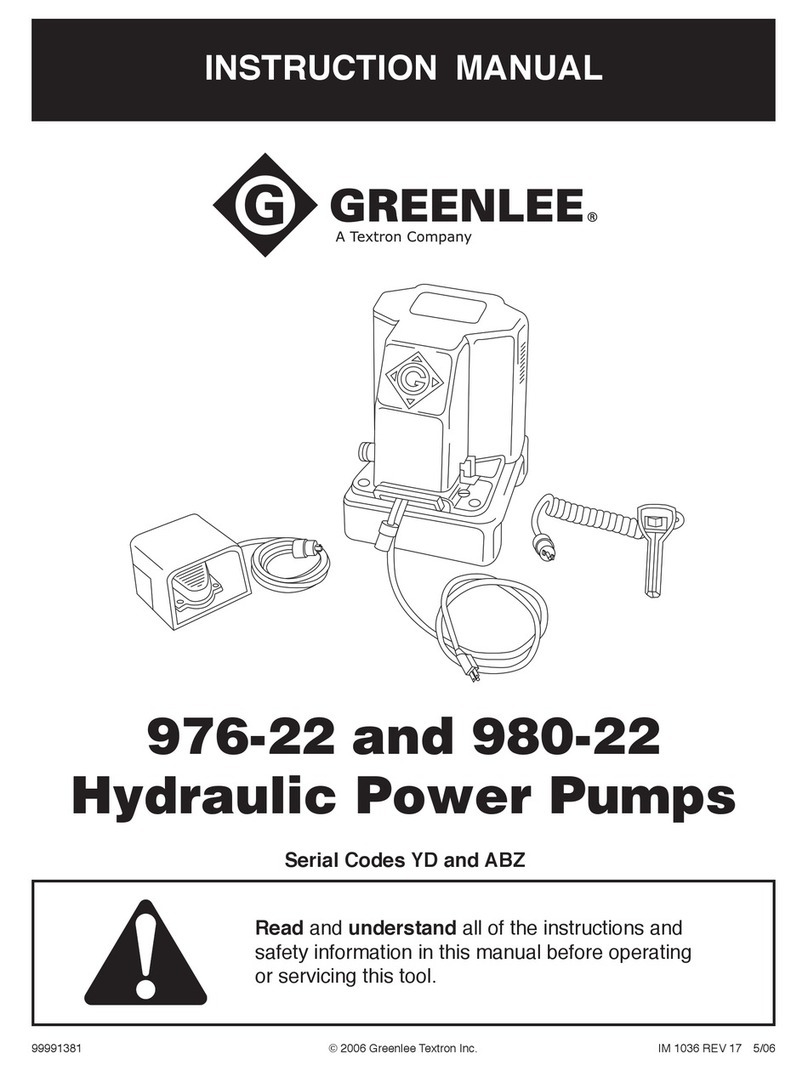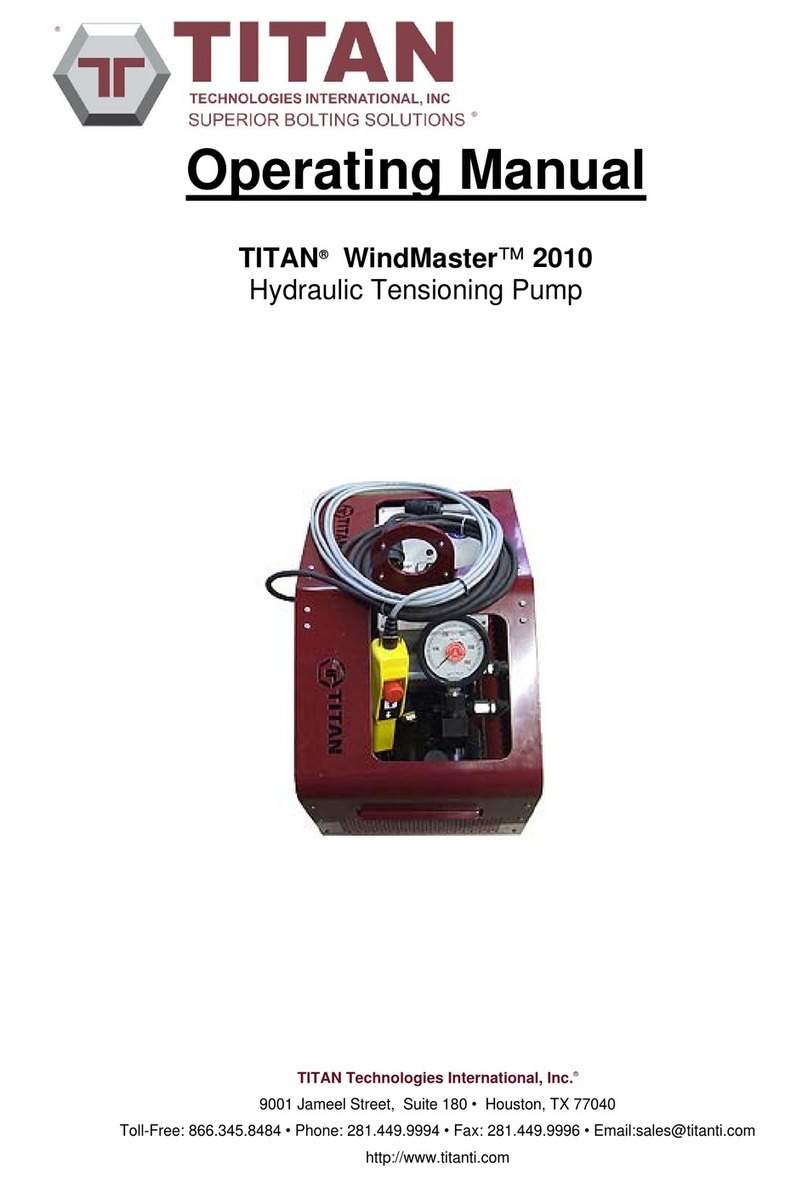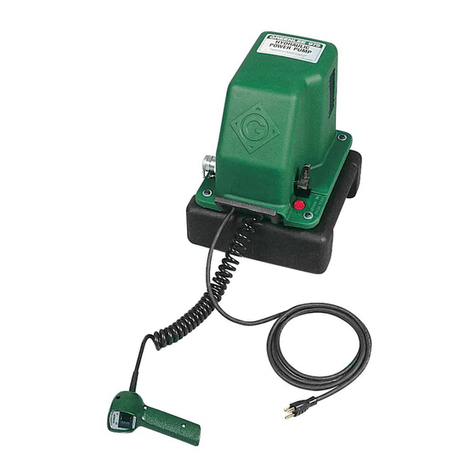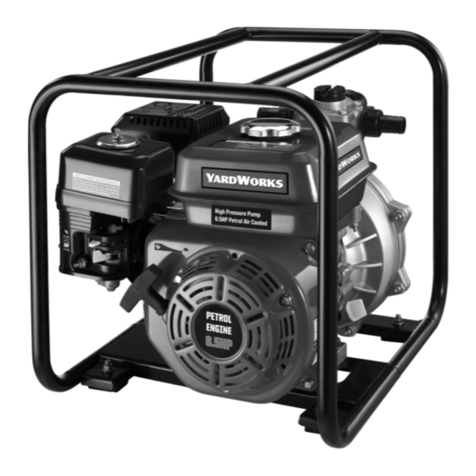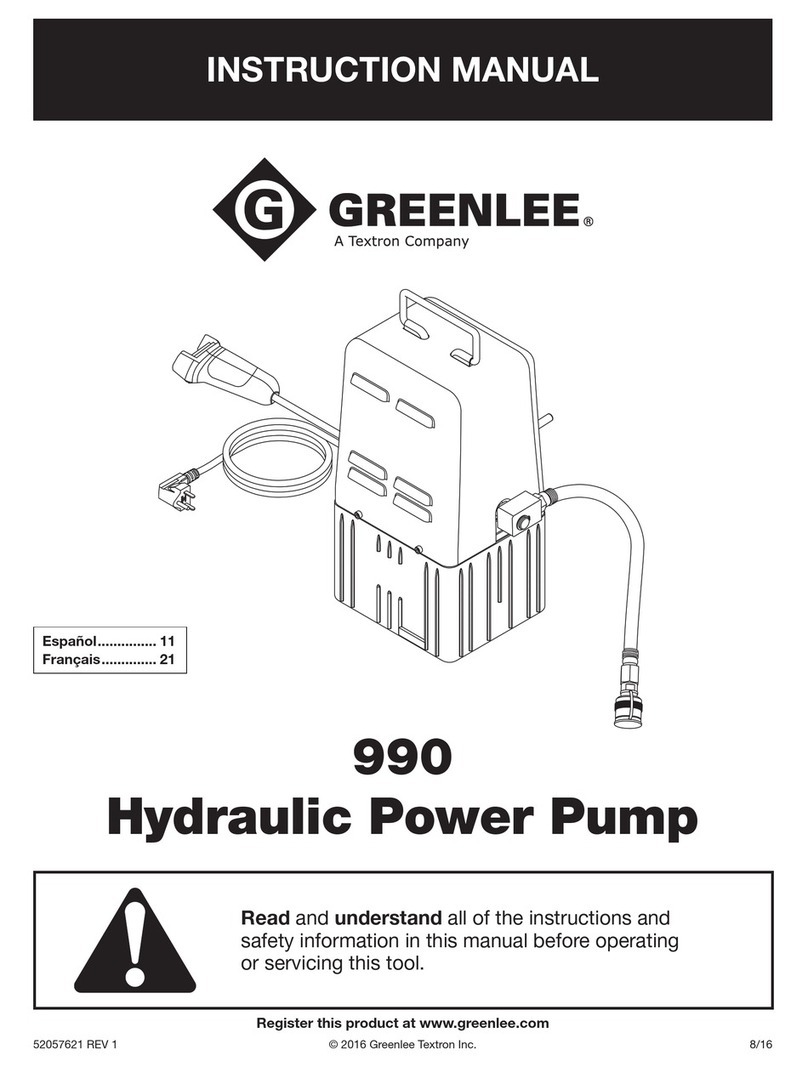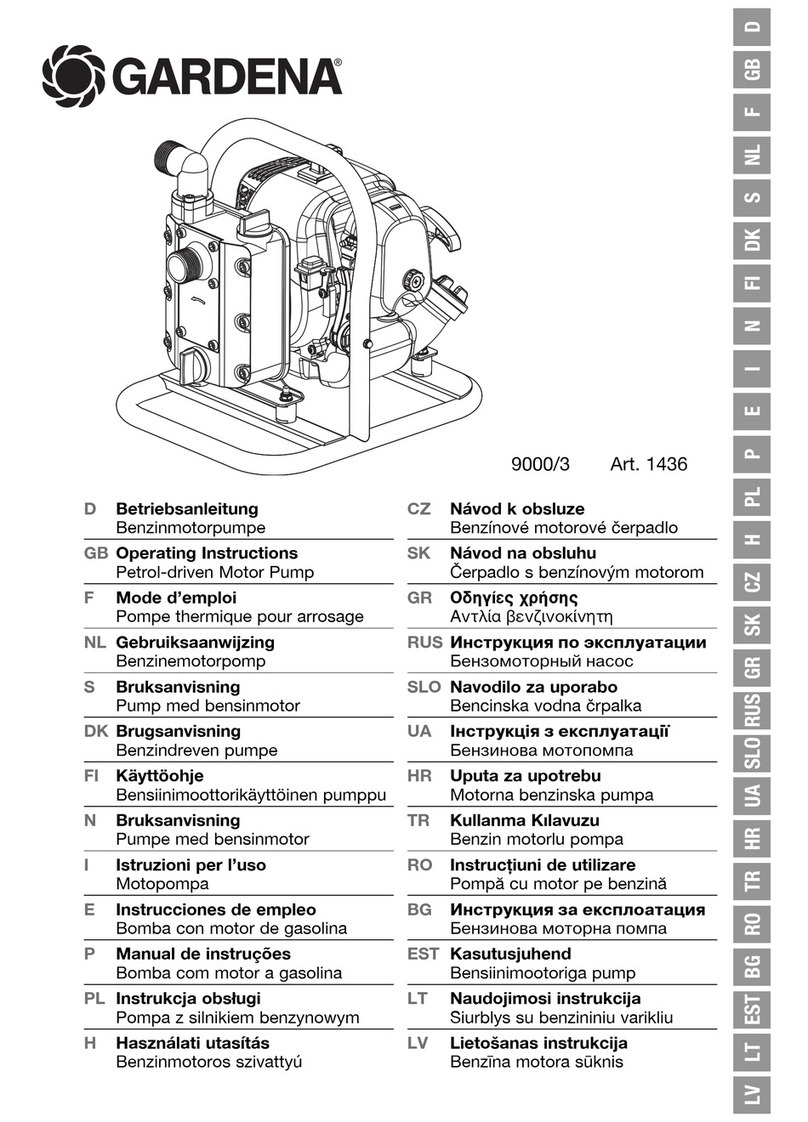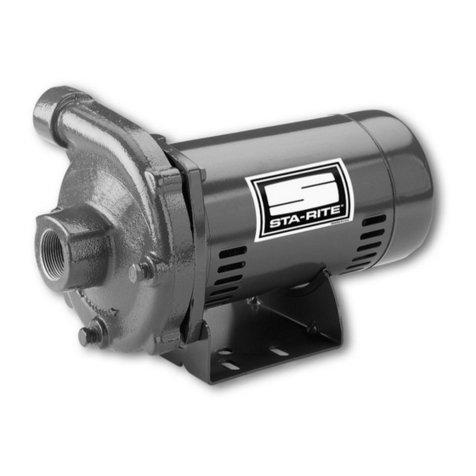
101-B00 Page 9/12
MAINTENANCE
PUMP ASSEMBLY
Before reassembling the pump, inspect all component
parts for wear or damage, and replace as required. Wash
out the bearing/seal recess of the head and remove any
burrs or nicks from the rotor and shaft.
1. Reassemble the OUTBOARD side of the pump first:
For a CLOCKWISE rotation pump, position the pump
cylinder with the INTAKE port to the left.
For a COUNTERCLOCKWISE rotation pump, position the
pump cylinder with the INTAKE port to the right.
2. Apply a small amount of quality O-ring lubricant in the
head recess. With new O-rings installed, push the
mechanical seal assembly (153) into the recess of the
head with the seal jacket drive tangs inward. The pin in
the seal stationary seat MUST be between the lugs in the
back of the head recess.
3. Apply a small amount of quality O-ring lubricant to the
Oring groove on the inside face of the head to facilitate
installation. Install a new head O-ring (72) in the groove
by laying the O-ring flat and starting in on one side of the
groove, stretching ahead with the fingers, as shown in
Figure 4.
Figure 8 – Head O-Ring Installation
4. Install the head (20) on the outboard side of the cylinder.
Install and snug up four head capscrews (21) 90° apart.
5. Hand pack the ball bearing (24) with grease. Refer to
"Lubrication" in the Pump Maintenance Section for the
recommended grease.
6. Install the bearing into the head recess. The bearing balls
should face outward, with the grease shield inward.
Ensure the bearing is fully and squarely seated against
the mechanical seal.
7. Turn the pump cylinder around and begin assembly on
the opposite, inboard end.
8. Remove the vanes (14) and push rods (77) from the rotor
and shaft assembly. Inspect for wear and damage, and
replace as follows:
a. Partially install the non-driven end of the rotor and
shaft (13) into the open side of the pump cylinder.
b. Leave part of the rotor outside of the cylinder so that
the bottom vanes can be installed and held in place
as the push rods are installed in the push rod holes
of the rotor. Insert the new vanes into the rotor slots
with the rounded edges outward, and the vane relief
grooves facing TOWARDS the direction of rotation.
Refer to Figure 2 in “Vane Replacement.”
c. After the bottom vanes and push rods are installed,
insert the rotor and shaft fully into the cylinder.
d. Install the remaining vanes into the top positions of
the rotor. Rotate the shaft by hand to engage the
drive tangs of the mechanical seal jacket in the
rotor slots.
9. Apply a thin coating of quality O-ring lubricant on the
inboard shaft to aid installation. Install the inboard head,
mechanical seal, and bearing as instructed in steps 2
through 6.
10. Rotate the shaft by hand to engage the seal drive tangs,
and to test for binding or tight spots. If the rotor does not
turn freely, lightly tap the rims of the heads with a soft
faced mallet until the correct position is found. Install all of
the remaining head capscrews for each head and
uniformly tighten, torquing to 25 lbs ft (34 Nm).
11. Inspect the grease seal for wear or damage and replace
as required. Grease the outside diameter of the grease
seal (104) and push it into the inboard bearing cover (27A)
with the lip inward. The lip will face outward when the
bearing cover is installed on the head. Attach a new
bearing cover gasket (26) and the bearing cover (27A) to
the inboard head. Install and torque the bearing cover
capscrews (28) to 15 lbs ft (20 Nm).
12. Attach a new bearing cover gasket (26) and the outboard
bearing cover (27) to the outboard head. Install and torque
the bearing cover capscrews (28) to 15 lbs ft (20 Nm).
13. Push the dirt shield (123A) over the inboard shaft and
firmly against the bearing cover.
14. RELIEF VALVE ASSEMBLY
a. Insert the valve (9) into the relief valve bore of the
casing with the fluted end inward.
b. Install the relief valve spring (8) and spring guide (7)
against the valve.
c. Attach a new relief valve O-ring (10) and the valve
cover (4) on the cylinder.
d. Screw the relief valve adjusting screw (2) with locknut
(3) into the valve cover (4) until it makes contact with
the spring guide (7).
e. After the relief valve has been adjusted, tighten the
Locknut (3) and install the relief valve cap (1) and O-
ring (88) NOTICE:
The relief valve setting MUST be tested and
adjusted more precisely before putting the pump
into service. Refer to "Relief Valve Setting and
Adjustment"
Operation without guards in place can
cause serious personal injury, major
property damage, or death.
Do not operate
without guard in
place.
15. Reinstall coupling, shaft key, and coupling guards.
16. Refer to “Pre-Start Up Check List” and “Start Up
Procedures” sections of this manual prior to restarting
pump operation.

